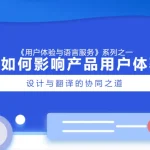Driven by globalization, translation technology has advanced rapidly, enhancing the efficiency and accuracy of cross-linguistic and cross-cultural communication. This article explores several major translation technologies and their core roles in modern translation, including machine translation, computer-assisted translation (CAT) tools, quality assurance tools, and trends for future technological development.
Machine Translation: From Basics to Intelligence
Machine translation (MT) refers to the use of computer programs to convert text from one language to another, evolving significantly from rule-based machine translation (RBMT) to statistical machine translation (SMT), and most recently to neural machine translation (NMT). In recent years, large language models (LLMs) and artificial intelligence (AI) technologies have further boosted translation quality. For instance, LLMs, such as GPT, are trained on billions of multilingual datasets, enabling them to grasp complex contextual layers and produce more natural, accurate translations.
Despite significant improvements in NMT and LLM technologies, challenges remain in capturing nuanced meanings and cultural context when translating rich or highly specialized texts. For instance, literary or marketing content translation may require a human touch to fully convey emotional and cultural undertones. Post-editing by human translators is often necessary to ensure precision and adaptability in these contexts.
Computer-Assisted Translation: Enhancing Efficiency and Consistency
Unlike fully automated translation, computer-assisted translation (CAT) tools aid translators by enhancing workflow efficiency and translation consistency. The core features of CAT tools include Translation Memory (TM) and terminology management.
- Translation Memory: TM saves segments, such as sentences or paragraphs, for future reuse, speeding up translation and ensuring consistency. This is particularly useful in large projects or collaborative settings, where it reduces redundant translation tasks.
- Terminology Management: Terminology management tools help standardize the translation of specialized terms, especially in fields like healthcare, legal, and technology, preventing misunderstandings caused by inconsistent terminology use.
CAT tools support translators in creating efficient, accurate workflows through data storage and intelligent matching.
Quality Assurance Tools: Ensuring Translation Quality
Quality assurance (QA) tools improve translation accuracy and consistency by automatically detecting errors within translations. These tools check for spelling, grammar, formatting, and term consistency, flagging potential issues for review. In fields such as technical and legal translation, QA tools can significantly reduce the risk of mistranslation or omissions, ensuring adherence to industry standards and client requirements.
QA tools are especially valuable during the review phase of projects, boosting translation reliability and easing the burden of manual proofreading, resulting in final translations that meet high-quality standards.
Future Outlook:Deep Integrationof AI and Translation
As artificial intelligence and large language models continue to evolve, future translation technology will not only enhance linguistic accuracy and fluency but will also make strides in cultural adaptation and real-time translation. The application of LLMs and AI will drive greater cultural sensitivity, enabling Technical Documents to better align with the cultural expectations and reading habits of target audiences.
- Real-Time Translation: The expansion of 5G networks will accelerate real-time translation capabilities, such as AR glasses for instant text translation or applications in international conferences and telemedicine for immediate cross-language communication.
- Deep Learning and Personalization: Future translation tools will incorporate deep learning to fine-tune outputs based on users' content needs and industry-specific language norms, offering personalized cross-cultural communication solutions.
Conclusion: Collaboration Between Technology and Human Expertise
While translation technology has introduced greater efficiency and intelligence, the value of human translation remains irreplaceable. The future of the translation industry lies in the collaboration between technology and human insight, using advanced AI and LLM technologies to enhance productivity while relying on language professionals to resolve complex linguistic and cultural challenges. Together, this synergy of technology and human expertise will provide higher-quality solutions for global cross-cultural communication.
About Giltbridge
With nearly three decades of growth, Giltbridge has remained dedicated to pursuing excellence—constantly refining our service quality and technical expertise to deliver outstanding language, content, and intellectual property solutions. We’re excited to partner with you on your journey to international success, unlocking opportunities and driving innovation along the way.
Contact Center
Whether you need our services or just want to learn more, reach out to our team via email, phone, or social media. We’re eager to work together and explore the boundless possibilities of the global market with you.






